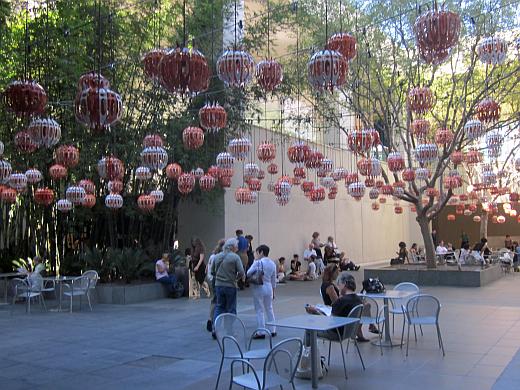 |
| "G" scale model train track set up among the cacti. |
Ever since I was a child, model train sets have ignited my imagination, inspiring me into daydreams of foreign lands or past eras, serving as sculpted tableaux upon which my fantasy may ride the rails across the boundaries of time and space.
So, it was with great enthusiasm that I had the opportunity to make a quick visit to the model train show at the South Coast Botanic Gardens. There were many fine sets on display in the primary exhibition hall, some with a Halloween theme, but I was especially thrilled to see that a few tracks had been set out in the Cactus Garden. Of course, I adore fabricated terrain and admire the design skills required to create a quality land set, but watching the trains course their way through real cacti, over authentic ground, and around sets arranged within a natural environment is a rare treat, specifically in that it can't be unpacked from a garage cabinet for a Sunday afternoon. ;-)
I've never had the happy conjunction of free time, disposable cash, and ample set space to pursue the model train hobby myself, but, if I ever get to a comfortable state of retirement, it's on my wish list. As a table top gamer, I love designing encounter settings, creating them on the cheap with paper and colored pencils. There is something exhilarating to this playful bit of world-building.
 |
| "G" scale train traverses a land with enormous flora. |
I've been considering starting a new blog to focus on my game-related interests, which are a bit too niche to share here at Paideia. It might be cool to share various setting design posts with you all. We'll see if I have sufficient time to do a proper job of it. ;-)
















































